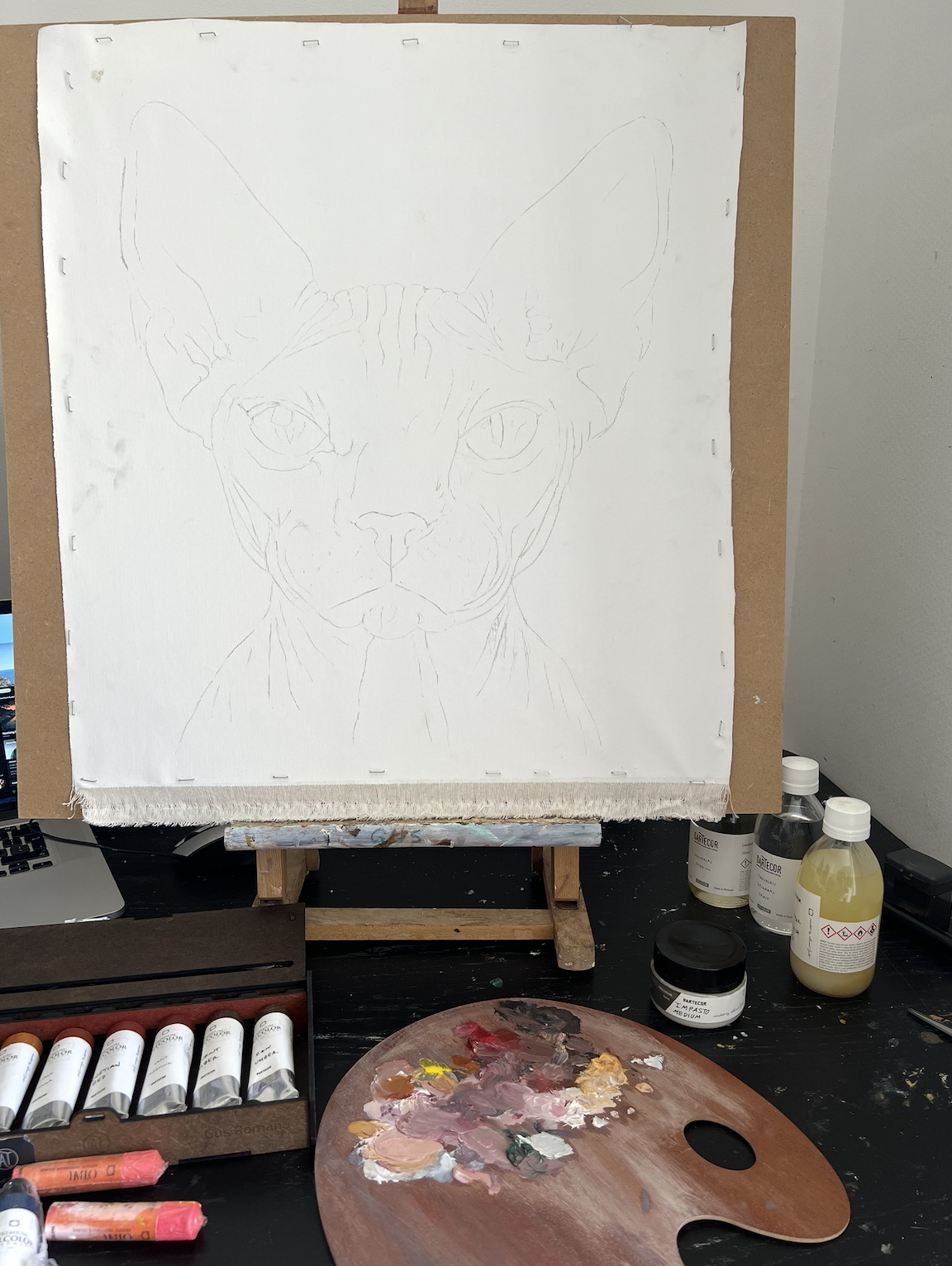What Is a Painting Really Worth?
The Artist’s Dilemma: Passion vs. Price Tag
There are days when I walk into my local art shop like a child entering a toy store — excited, full of ideas, already picturing the next painting. And then there are days, like yesterday, when I leave with a bag of materials and a receipt so high that it shakes me to my core. Over €600. That’s how much it cost me, just to finish and prepare a few rolled-up paintings for stretching and framing. Six hundred euros not to start a new project, not for some extravagant luxury, but simply to get my work ready to hang on a wall.
And that’s when the familiar question comes: Will I ever make this back? Will I ever be able to live from this? Is it really worth it?
The Hidden Cost Behind Every Painting
I usually work on large canvases, so I buy my materials in bulk. I start with a 10m x 2.10m cotton canvas roll — enough freedom to paint at any size my vision demands. Before I can even put paint on it, I cut it to size, prime it with two layers of gesso for protection and smoothness, and prepare my brushes and palette.
The oils themselves are not cheap. I work with Van Gogh, Winsor & Newton and Dartecor paints, and I buy the largest 200ml tubes to avoid running out mid-creation. My essential colors are white, marine blue, cadmium red, yellow, brown, and black — the backbone of my palette.
I use oil brushes of all shapes and sizes — from fine precision tips to large flat brushes for textured strokes. I buy quality because bad brushes shed hair into your work and don’t hold paint the same way. A single good brush can cost as much as a dinner for two.
Then there are mediums and solvents — Turner Sennelier medium, odorless petroleum essence, varnishes to protect the finished work. And finally, when the painting is dry, I have to stretch it onto a wooden frame (ripas and travessas) and sometimes choose an actual decorative frame.
Even without counting my time, a single oil portrait can easily cost between €50 and €500 in materials alone. And I’m not even using linen yet — which would be the professional choice to ensure a painting lasts centuries. That’s my next step, but it will raise the costs even more.
The Financial Reality of Passion
I am not painting by commission right now. I’m not producing these works with a guaranteed buyer waiting. Everything I paint is, in financial terms, a risk. Over the past 10 years, I’ve spent far more than I care to calculate on art materials. And yet, I keep doing it.
Why? Because I can’t stop. Because painting is not something I choose to do — it’s something I must do.
But that doesn’t mean I’m blind to the economics of it. If I were to calculate the true value of a painting — materials, hours, years of practice, artistic vision — the price would be far higher than most people are willing to pay. And that’s the dilemma: I want art to be accessible, but the reality is that a large-scale oil portrait is a luxury object, even if I never intended it to be one.
A Portrait Is More Than a Picture
And yet, if someone asked me if an oil portrait is worth the price, my answer would be a resounding yes. Not because I am an artist defending my livelihood, but because I understand what an oil portrait really is:
It is immortality in pigment and texture.
Think of Napoleon. He built his legend not only through battles but through artworks designed to tell his story — even rewriting history on canvas, as in The Coronation of Napoleon or Napoleon Crossing the Alps. Think of the Mona Lisa, which holds the gaze of the world centuries after Leonardo painted it. Think of Rembrandt’s self-portraits, the image of Louis XIV, or even Andy Warhol’s Marilyn Monroe — an icon preserved in color long after her voice went silent.
A car will rust, a watch will lose its shine, but a portrait — if cared for — can outlive nations.
The Artist’s Gamble
The world has changed. We live in an age where AI can generate breathtaking digital images in seconds, and 3D printers can sculpt in marble-like materials. And yet, the act of a human hand pushing paint into canvas fibers remains one of the most stubbornly irreplaceable gestures in creation.
It’s true — AI might one day mimic oil painting textures perfectly, print them, even imitate the cracks of age. But it will never carry the same weight, because it will never carry the same life.
Still, for artists like me, the risk is real. The materials are expensive, the work is slow, and the market is unpredictable. The temptation to quit and choose a safer path is always there. And yet, every time I consider it, I find myself in front of a blank canvas again.
Why We Keep Going
At the end of the day, being an artist is an act of faith. We invest time, money, and pieces of ourselves into something with no guarantee of return. We work in the hope that one day, someone will see the value in what we create — not just in euros, but in meaning.
Because here’s the truth: after we are gone, the only things that remain of us are the traces we leave behind. For some, that’s children. For others, it’s buildings or books. For me, it will be portraits — moments in oil that say, I was here. This mattered.
And maybe that’s worth every cent.

